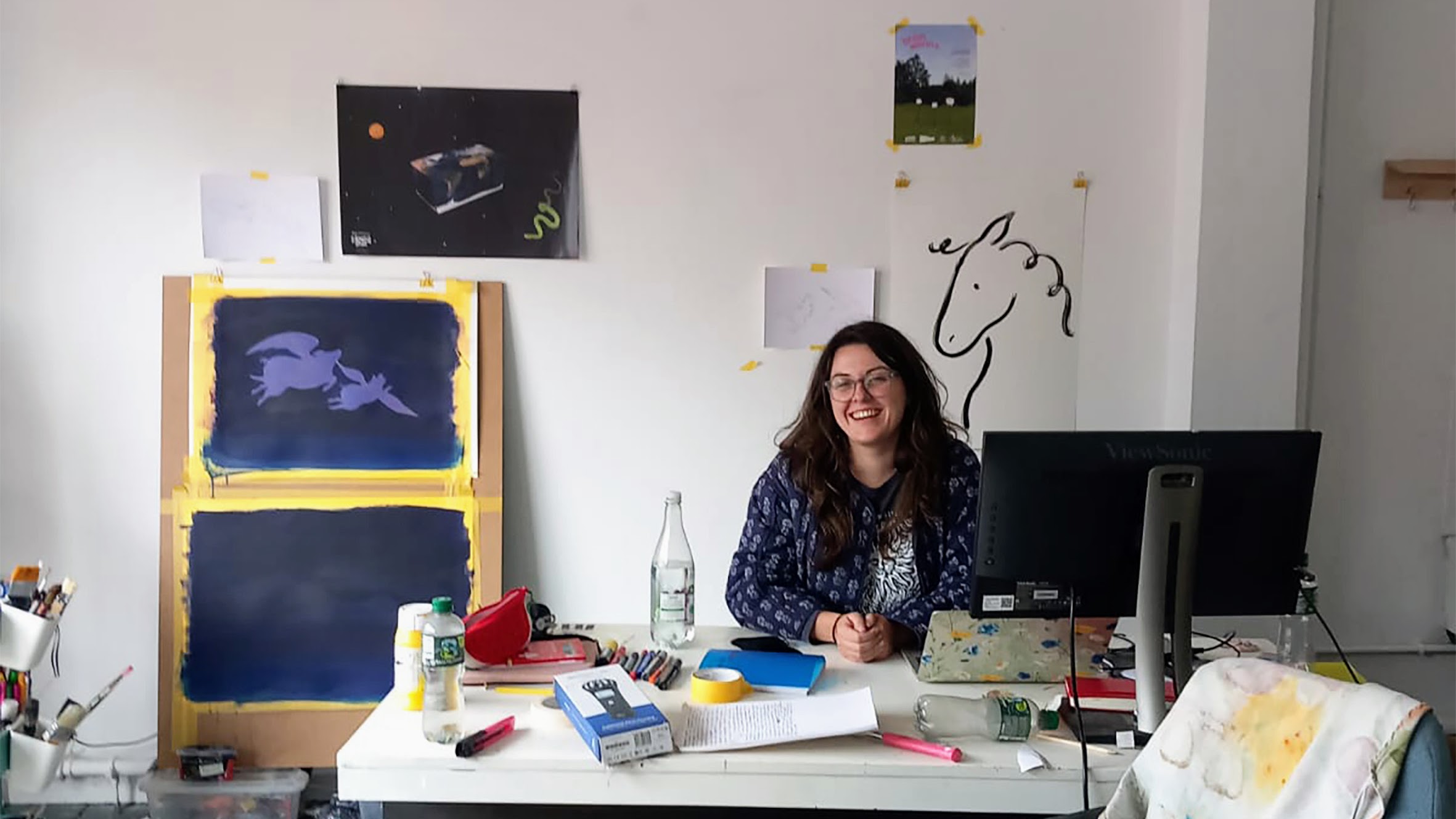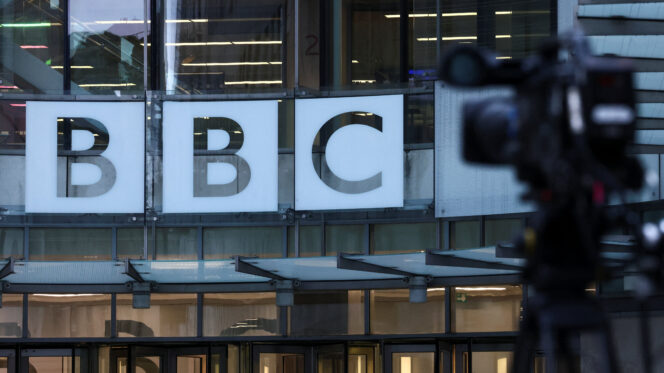Ireland’s Basic Income for Artists Has Been a Runaway Success. Why Is the Government so Nervous About Expanding It?

In early 2022, Elinor O’Donovan was living in Cork, working part-time as a receptionist, and dedicating the rest of the week to her work as a visual artist. “I was tentatively interested in doing what I do as a career,” O’Donovan told me. “I had had some funding from the Arts Council [of Ireland], so I had a little taste of knowing that it’s possible to make work and be paid as an artist.” O’Donovan was about to get more than a taste: in September that year, she found out she had been successful in her application for a basic income from the Irish government to sustain her art full-time for the next three years.
O’Donovan was one of 2,000 Irish artists chosen from more than 9,000 applicants to be a recipient of the Basic Income for the Arts (BIA) pilot. The scheme was the brainchild of Catherine Martin, an Irish Green party politician who then served as minister for tourism, culture, arts, Gaeltacht, sport and media (the Green party was, until 2024, a partner in Ireland’s governing coalition). Overseen by the Irish government Department of Culture, Communications and Sport, the pilot provided recipients with €325 (£282) a week, paid in monthly instalments of €1,413.21 (£1,226), for three years. Having seen the scheme’s success, in October the Irish government announced it was looking to make the scheme permanent, though it is not expanding it nearly as much as campaigners would like.
To assess the pilot, O’Donovan’s “treatment group” was compared with a control group of 996 artists who did not receive the payments. Both groups completed surveys every 6 months, measuring changes to their wellbeing and financial situation. The results from year two of the three-year pilot were conclusive: compared with the control group, basic income recipients had, on average, spent 11 hours more per week on their creative practice, and 3.5 fewer hours in non-artistic work; they had also made 3.9 more pieces of work in the previous 6 months. Almost a third of grant recipients reported an “increased ability to sustain themselves through arts work alone”.
That’s certainly the case for O’Donovan. “It’s given me loads of time to be able to work on my practice,” she told me, “but beyond that, it’s just been transformative in terms of practical stuff like financial stability and security. When I got the basic income, I was able to plan long term, I was able to start a pension, start saving.” O’Donovan has now been working full-time as an artist since receiving the grant in September 2022. “It sounds silly, but I was able to exercise, I was cooking for myself a lot more, I was able to go to counselling for the first time.”
The basic income programme, the first of its kind in Europe, was an attempt to rebuild the cultural sector post-pandemic. The republic had the longest lockdown in Europe. Its cultural sector was in tatters, and its workers were on the brink. A government survey of the 3,000 artists at the start of the pilot in 2022 found that more than 56% of respondents were experiencing enforced deprivation, defined by the Central Statistics Office as when a household cannot afford two or more basic items. In September 2020, the government established an Arts and Culture Taskforce comprised of politicians, artists, and representatives of cultural institutions like Screen Ireland and the Irish Theatre Institute, to produce a report on how the sector could begin to recover. The report focused largely on economic losses during the pandemic, but also put an emphasis on supporting artists’ physical and mental wellbeing. The taskforce’s number-one recommendation? A basic income pilot. In June the following year, as part of its economic recovery plan, the government committed to piloting a Basic Income for the Arts scheme. Following months of consultation, the pilot launched in the spring of 2022.
Though groundbreaking, the Irish scheme had echoes around the world as states tried to prop up their post-pandemic creative industries. In the UK, the £1.57bn Culture Recovery Fund (which included a repayable element) supported around 5,000 organisations, and according to the government’s assessment, supported almost 220,000 jobs. In New York, the Guaranteed Income for Artists initiative gave 2,400 artists $1,000 (£759) a month for 18 months post-pandemic, though the $125m (£95m) initiative was funded by private foundations, not the government.
Michaele Cutaya is a policy officer at Praxis, the Irish artists’ union. “The impact of the basic income has exceeded even my expectations,” she said. “Whichever measure you take, it’s absolutely stunning,” says. “Because there is the differential between the control group, which basically represents the sector, and the recipients, you can really have this fine measure of how much actual impact it has. I think the reports are precious gems.”
Not only was the scheme successful for the 2,000 artists who received the income payments, the Irish government’s cost-benefit analysis for 2021-25 found that the scheme produced more than €100m (£88.1m) in socio-economic benefits, with every €1 (88p) invested in the pilot returning €1.39 (£1.22) in value to the Irish economy and society. The scheme also decreased the recipients’ dependence on other forms of social welfare, with these artists receiving, on average, €100 (£88.10) less a month from welfare payments.
The transition from a pilot to a permanent scheme would not have been possible without the work of community groups. In June, the minister for culture, communications and sport Patrick O’Donovan (no relation to Elinor) announced a 6-month extension to the pilot and invited proposals to make it permanent. Ireland’s National Campaign for the Arts (NCFA), a grassroots arts advocacy organisation, began lobbying heavily to make the scheme permanent and won several key backers, among them Dublin city council and Donegal county council. Artists across Ireland contacted their representatives and campaigned in the media. On Culture Night, an annual celebration of the arts called by the Irish Arts Council in 2006, and held on 19 September, arts events across the country held a one-minute “silent strike” to demand that the government retain and expand the BIA.
“While the arts do bring an economic value to the country, that’s never the argument that we want to solely present,” said Maria Fleming, chair of the NCFA. “For us, the heroes of the story are the control group, who did not receive the basic income, but gave so generously of their time, and so vulnerably addressed what the living situation for them as an artist was. I suppose we were fired up by the information that we saw in the surveys to really push to see basic income for artists rolled out in a more permanent manner.”
In a recent public consultation, 97% of the 17,000 respondents supported making the BIA scheme permanent. In the October budget, it was announced that the culture ministry had secured agreement from the government to continue the scheme permanently. “This scheme is the envy of the world, and a tremendous achievement for Ireland, and must be made futureproof and sustainable,” said minister O’Donovan. This renewed scheme is set to open for applications in September 2026, with 2,000 new places and broadened eligibility criteria, possibly extended to 2,200 recipients pending government approval. The details of what exactly this new scheme will look like, who will be eligible, and what it will mean for the sector at large, are not yet clear. A further consultation is due to take place between the ministry and the arts sector to shape this new, permanent scheme.
There are fears in the arts sector that, despite the demonstrable effecacy of the BIA pilot, the proposals for a permanent scheme do not go far enough. The scheme was started under a Green party ministry, a party that lost all but one of its seats in the 2024 general election, including Martin’s. The department is now run by the centre-right Fine Gael, which changed the department’s name in the summer to remove reference to the arts (it is now the Department of Culture, Communications and Sport). This name change in June 2025 prompted some backlash from the arts sector, concerned that it signalled a downgrading of this government’s priorities in this area.
For Praxis, the ideal scheme would be one which takes in every eligible artist in Ireland. They have been advocating for a successor scheme which is expanded to all eligible artists, is allocated indefinitely, and is indexed according to inflation. “With all this data, the announcement was a bit of a letdown,” said Cutaya. “It felt like, ‘What’s the holdup?’ Because the other teaching from the data was the levels of deprivation in the sector. It was quite striking to see how the control group got steadily worse as the treatment group got a little bit better.”
“A little” is the operative phrase here. While BIA recipients’ living standards generally improved, two years into the BIA pilot scheme, 30% of grant recipients were still experiencing enforced deprivation, compared with 30% of the control group and 15.7% of the general population. BIA is no silver bullet.
The current extended pilot is set to end in February 2026, leaving a gap of more than half a year before the permanent scheme is set to launch. Meanwhile, there remains a lack of clarity about how many artists will benefit from the permanent scheme, and whether any of the first 2,000 recipients will be eligible to reapply. There is also concern that, given the small number of places on the scheme, it risks creating a two-tier system for the arts in Ireland, all while mainstream arts funding sources are dwindling.
“We see basic income for artists as part of the solution, but not the whole solution,” said Maria Fleming. “Basic Income for the Arts is just one part of an ecosystem of support that’s needed for the arts.”
For organisations like Praxis and the National Campaign for the Arts, the fight to tackle deprivation in the arts cannot begin and end with basic income. The Arts Council of Ireland is experiencing unprecedented demand for its funding awards, with requests for funding at 260% of the level in 2019, while its funding from the government is not keeping pace with inflation. In 2025, the budget for the Arts was €380m (£335m), and it is announced to be €384m (£339m) for 2026, but due to inflation, this works out at a real-world cut of €3.6m (£3.2m). Rents are spiralling in Ireland and are now one-third higher than before the pandemic. As the consultation process begins for the Basic Income for the Arts successor scheme, those in the sector are keen that the hard work and sacrifices of those in the pilot scheme are not forgotten.
O’Donovan, along with 1,999 of her fellow artists, is counting down the days until February 2026. She told me that her future post-pilot feels almost as uncertain as it did in 2022. “What I’ve been thinking is that I’m going to have to get another job again,” she said. “Which is fine, but the jobs I was doing, I was just there to pay rent, and I wasn’t doing the thing I was good at, I wasn’t doing the thing I love, and it really just felt like a means to an end of paying my rent rather than contributing to society.”
Ellen McVeigh is a freelance journalist based in Belfast.


